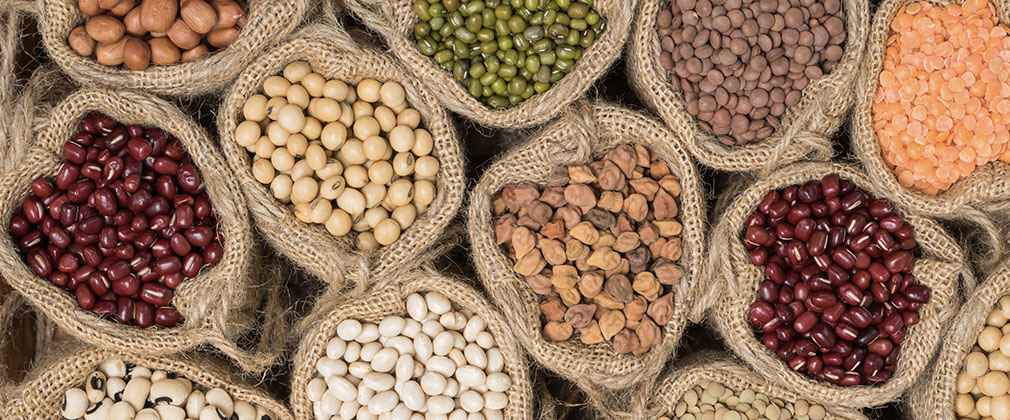Legumes: Important Protein Source for Healthy and Sustainable Diets
Apr 09, 2021

Increasing legume consumption should be prioritized to address the challenge of providing healthy, sustainable, and affordable diets to the world’s growing population, according to new research from the Johns Hopkins Center for a Livable Future (CLF) based within the department of Environmental Health and Engineering at the Johns Hopkins Bloomberg School of Public Health.
Legumes such as beans, peas, lentils, and peanuts are an underutilized source of quality dietary protein worldwide. Legume production requires less land, water, and greenhouse gas emissions than animal protein sources like meat and dairy. Over the last three decades, global per capita legume consumption has stagnated, while meat consumption has increased at unsustainable levels. A growing body of evidence suggests that global shifts toward diets that are high in plant-based protein sources like legumes and low in meat would significantly reduce total agricultural greenhouse gas emissions.
“The global population is expected to grow by around 25 percent to 9–10 billion by 2050. Meeting this population’s nutritional needs will require significant increases in the production of dietary protein. The source of this protein will ultimately have important implications for our ability to meet critical climate change mitigation targets,” said Richard Semba, MD, MPH, the W. Richard Green Professor of Ophthalmology at the Johns Hopkins School of Medicine and an associated faculty member with CLF. “Our goal with this paper was to examine the potential for legumes to become a major source of dietary protein as an alternative to meat consumption.”
To conduct their analysis, the researchers reviewed evidence from the scientific literature on the nutritional, environmental, economic, and cultural value of legumes in diets around the world. They also examined the potential advantages and disadvantages of increasing the use of legumes in a shift to more sustainable diets, as well as structural factors in the food system that could pose barriers to the adoption of this dietary shift.
The study found that a global shift towards the use of legumes as a major source of dietary protein has the potential to yield health and environmental benefits, but would require substantial changes to current legume production, distribution, and consumption patterns. Key advantages of legumes as a protein source include their generally high digestibility and amino acid content, affordability, salience in many traditional diets, adaptability to different climates, ability to be processed into a variety of foods, and relatively small environmental footprint. Legume cultivation also enhances soil quality through nitrogen fixation, which can reduce the need for nitrogen fertilizers and improve the production of other crops through intercropping or crop rotation.
Although a shift from animal protein to legumes would have substantial benefits for the climate, the researchers note that it may not meet all nutritional requirements, especially in low-income settings where food availability and variety are limited. Other limitations include the potential for large fluctuations in yield, social stigma associating legume consumption with poverty in some cultures, and lower profitability compared with other crops. The study also highlighted barriers intrinsic to the current food system, such as the diversion of large portions of legume production for animal feed.
The researchers argue that a global dietary shift towards greater legume consumption will ultimately depend upon greater availability, consumer awareness, economic access, choice, and demand. Potential strategies for facilitating this dietary shift could include enhanced consumer outreach, investing in the development of legume cultivars, and providing financial incentives for cultivating legumes.
“This study highlights the potential for legumes to become a major, sustainable source of protein that could help support the alignment of global dietary patterns with climate and health goals. It also provides evidence that this kind of transformational dietary shift cannot be applied uniformly or achieved without taking the nutritional needs of vulnerable populations into account,” said Martin Bloem, MD, PhD, director of the CLF and the Robert S. Lawrence Professor of Environmental Health at the Bloomberg School.
“Legumes as a sustainable source of protein in human diets” was written by Richard D. Semba, Rebecca Ramsing, Nihaal Rahman, Klaus Kraemer, and Martin W. Bloem and published in Global Food Security.